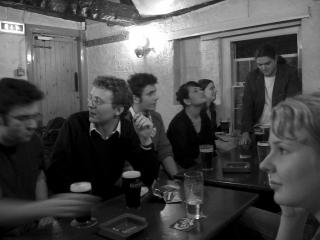In less than a month, the members of my course will be writing our final exams. Everyone has one on history from 1900 to present and another on international relations theory. Then, each person has their two optional papers. Mine are international law and the developing world. For each exam, we will be presented with twelve questions. Of these, you need to answer three, each by means of an hour long essay. Twelve hour-long answers over the course of three days and the M.Phil is complete. Passing all four is necessary to pass the M.Phil.
On the basis of how questions are fairly consistent from year to year, the most popular strategy is to prepare on a number of `topics.` For each, you identify and seek to understand the key bits of the secondary literature. Then, you try to come up with a clever seeming argument and map out – in general terms – how you would approach the question. Several course instructors have encouraged us to use this kind of approach. According to the Notes of Guidance:
In the written examinations, answers which merely regurgitate facts or opinions will not suffice: answers must be well structured, relevant to the specific question asked on the examination paper, well written, and show mastery of the subject.
I take “mastery of the subject” to mean having read and understood the appropriate academic sources. For examples of consistency between questions year to year, have a look at some past history questions and past theory questions.
My initial plan was not to use the topic-based approach. For our qualifying test last year, my approach was simply to re-write all my notes, re-do some of the most important readings, and then write some practice tests. That has the virtue of comprehensive coverage, but it does not prepare you as well for a question that you have anticipated than the topics approach does. Working on selected topics allows for a depth of knowledge and an opportunity for organization that is likely to be advantageous for Oxford-style examinations.
The biggest challenge relating to the finals is the sheer breadth of material. For each of our 24 core seminars and 16 optional seminars, there were two or three questions for consideration. For each of those, about ten readings were listed, most of them books. Provided you read 3-5 sources per question per week, that is easily several hundred complex articles or books. Even going back over notes on nearly one hundred different discussion topics is daunting. On one level, the volume of work involved in preparing for finals is a good thing, as it demonstrates the breadth of the program. At another, it demonstrates one’s cognitive limitations quite effectively.
My biggest problem, as far as these exams are concerned, is that I have never been particularly good at remembering who espoused what theory. Given the extent to which academic international relations is a name-game in which big egos dominate and every scrap of credit is fought over, this is a considerable defect for someone considering any further involvement with the academic world. I could imagine being familiar with all the big names in one’s particular sub-field of IR, but the thought of doing so for every major branch of the field, from the history of the interwar period to the economics of foreign aid, seems quite beyond my capability.




